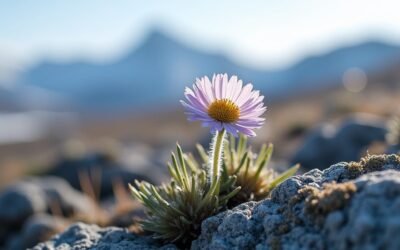For the best viewing experience of harp seals' migration, head to Les Îles-de-la-Madeleine in the Gulf of St. Lawrence, Canada. Plan your visit from late February to early March to observe them during their peak season. Equip yourself with warm, waterproof clothing and a good camera. Choose ethical tour operators who prioritize seal welfare and follow guidelines to minimize disturbance. Consider joining guided tours led by local experts to gain deeper insights into seal behavior and conservation efforts. This thorough approach will enhance your experience, ensuring you witness this natural spectacle proficiently and responsibly. Discover more tips below.
Main Points
- Visit Les Îles-de-la-Madeleine from late February to early March for peak harp seal migration.
- Dress in layers with waterproof gear and sturdy boots for changing weather conditions.
- Use binoculars or a good zoom lens to observe seals without disturbing them.
- Choose reputable tour operators that prioritize seal welfare and follow ethical wildlife watching guidelines.
- Join guided tours led by local experts for in-depth knowledge and responsible observation practices.
Best Viewing Locations
Les Îles-de-la-Madeleine in Canada's Gulf of St. Lawrence stands out as a premier location for observing the migration of harp seals. This region becomes a hub of activity as over 100,000 harp seals gather for molting, pupping, and breeding, making it one of the top choices for enthusiasts aiming to witness the annual migration. The unique geography and rich ecosystem of Les Îles-de-la-Madeleine create an excellent environment for these marine mammals, offering unparalleled viewing opportunities.
One of the most renowned viewing locations is Château Madelinot, which has been operating seal-watching trips for over 35 years. This establishment provides expert-guided experiences, ensuring that visitors can observe the seals in their natural habitat with minimal disturbance. During the seal-watching season, which typically spans from late February to early March, the region aligns with the peak activity of the harp seals, maximizing the chances of witnessing these majestic creatures up close.
The Gulf of St. Lawrence serves as a critical migratory path for the harp seals, and Les Îles-de-la-Madeleine's strategic position within this gulf offers ideal vantage points. This combination of expert guidance, prime location, and peak seasonal activity makes it a top destination for seal-watching.
Timing Your Visit
To maximize your chances of witnessing the harp seals' migration, plan your visit to Les Îles-de-la-Madeleine from late February to early March. This period coincides with the pupping season, offering a unique opportunity to observe newborn baby seals in their natural habitat. During this time, over 100,000 harp seals congregate in the region for molting, pupping, and breeding activities, making it an ideal season for seal-watching enthusiasts.
Château Madelinot, a reputable establishment with over 35 years of experience, organizes specialized seal-watching trips during this peak season. These trips provide an excellent platform to experience the migration and observe the harp seals up close, ensuring that visitors can witness these fascinating creatures as they nurture their young. The late February to early March window is critical, not only due to the high concentration of seals but also because the newborn baby seals are most visible and active during this time.
Timing your visit during this seal-watching season guarantees the best chance to see the harp seals in their natural habitat, engaging in behaviors that are integral to their lifecycle. Meticulous planning around this period is essential for a rewarding and memorable experience.
Essential Gear
Proper preparation with the right essential gear is necessary for a successful and comfortable harp seal-watching experience. Observing these majestic creatures in their natural habitat requires not only enthusiasm but also the correct equipment to guarantee safety and enjoyment.
- Clothing and Footwear: Dress in layers to adapt to changing weather conditions. Warm clothing, including gloves and a hat, is necessary to stay comfortable in cold, windy environments. Waterproof gear, such as a rain jacket and pants, will keep you dry. Sturdy, waterproof boots with good traction are essential for traversing potentially slippery terrain.
- Optical Equipment: Binoculars or a camera with a good zoom lens are indispensable for getting a closer look at the seals without disturbing them. These tools will enable you to observe from a distance, capturing memorable moments and details of harp seal behavior.
- Storage and Essentials: A backpack is useful for carrying essential items such as water, snacks, sunscreen, and any additional gear. This ensures you have everything you need for a comfortable and prepared experience.
Ethical Wildlife Watching
While having the right gear is important, practicing ethical wildlife watching is paramount to guarantee the well-being of harp seals and their environment. One of the most essential steps is to choose reputable tour operators that prioritize the welfare of the seals and their natural habitat. These operators adhere to guidelines and regulations set by conservation authorities, ensuring that their practices are responsible and sustainable.
Maintaining a safe distance from the seals is vital for minimizing stress and disturbance. Observers should use binoculars or cameras with zoom lenses to get a close view without encroaching on the animals' space. This not only respects the seals' natural behavior but also enhances the quality of wildlife viewing.
It's important to follow all established guidelines and regulations during your visit. Conservation authorities provide these rules to protect both the animals and their habitats, promoting responsible practices among wildlife watchers. By adhering to these standards, you contribute to the broader efforts of ethical wildlife watching and conservation.
Ultimately, respecting the seals and their environment fosters a more enriching and sustainable wildlife viewing experience, ensuring these magnificent creatures can be enjoyed by future generations.
Guided Tours and Local Experts
Joining guided tours led by local experts offers an unparalleled opportunity to gain in-depth knowledge of harp seals' migration patterns. These professionals possess extensive expertise on the behavior, habitat, and conservation efforts concerning harp seals. Their insights greatly enhance the viewing experience, providing context that transforms mere observation into a rich educational journey.
Guided tours also guarantee a safe and responsible approach to observing harp seals. Local experts are well-versed in the best practices for maintaining a respectful distance and minimizing human impact on these delicate ecosystems. Such tours often come with the added convenience of transportation, accommodations, and specialized gear, further optimizing the experience for participants.
To maximize your enjoyment and understanding, consider the following:
- Knowledgeable Guides: Benefit from the profound expertise of local experts who can explain intricate details about harp seals' migration patterns and behavior.
- Responsible Tourism: Engage in responsible observation practices that prioritize the well-being of harp seals and their habitat, guided by professionals who emphasize conservation efforts.
- Comprehensive Packages: Take advantage of all-inclusive packages that provide necessary logistics, ensuring a seamless and enriching viewing experience.
What Are the Best Tips from the Ultimate Guide to Witnessing Harp Seal Migration?
The best tips for witnessing harp seal migration include visiting the Gulf of St. Lawrence during the peak season in late February or early March. Booking a guided tour enhances the experience, as local experts know the best observation points to witness the incredible spectacle of hundreds of harp seals gathered on the ice.
What Are the Best Tips for Viewing Harp Seal Migration During the Optimal Season?
To witness the mesmerizing harp seal migration, timing is everything. The optimal season for harp seals typically falls between late February and early March when they gather on pack ice to give birth. Booking tours in advance, dressing warmly, and bringing binoculars will enhance your experience during this unique wildlife spectacle.
Conclusion
To sum up, watching the migration of harp seals can be a fulfilling experience when approached with careful planning and respect for wildlife. By choosing ideal viewing spots, timing visits effectively, preparing with necessary gear, following ethical wildlife watching principles, and consulting guided tours or local experts, one can improve the overall experience while reducing environmental impact. This method guarantees a sustainable and enriching interaction with these extraordinary marine mammals.


